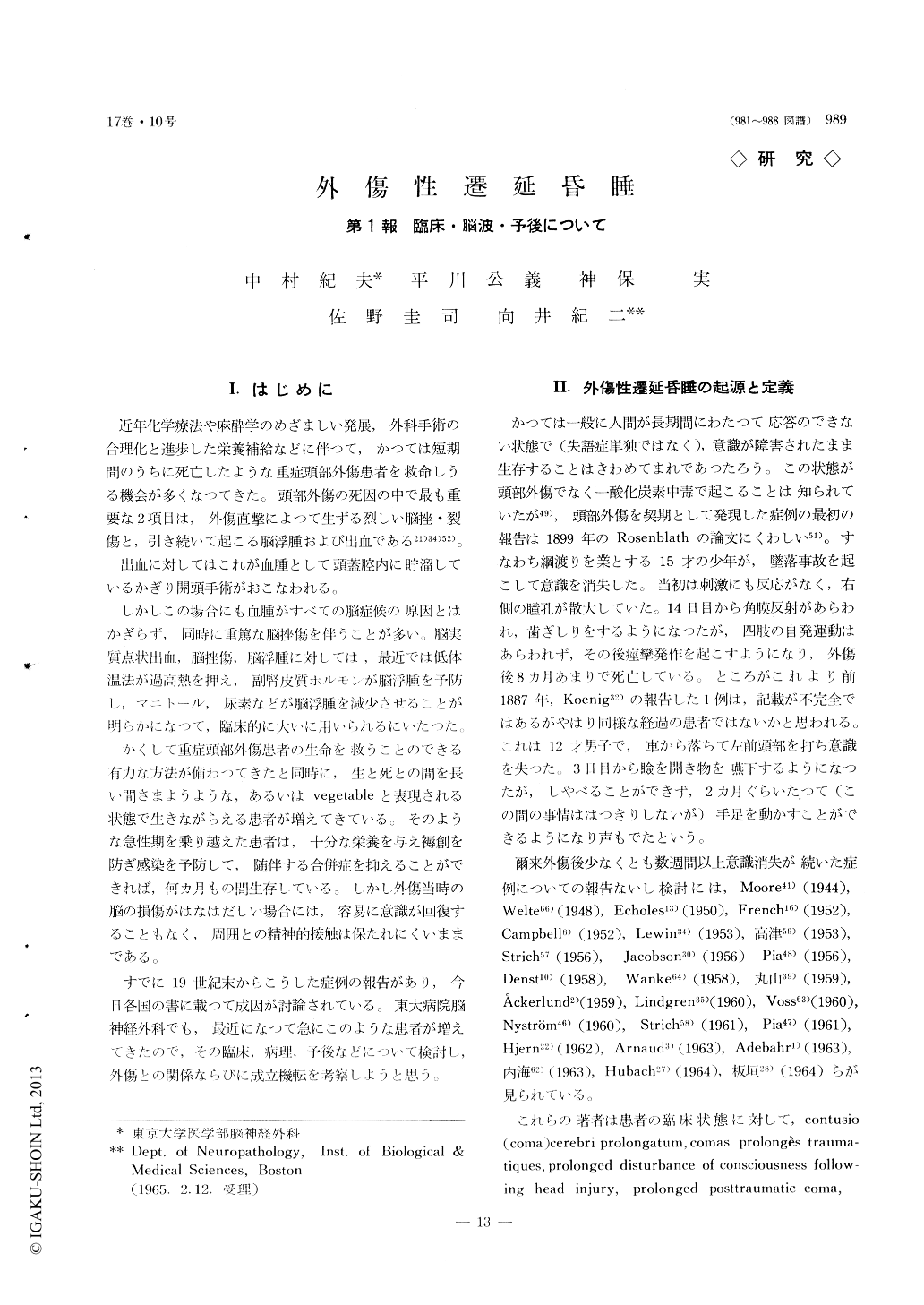Japanese
English
- 有料閲覧
- Abstract 文献概要
- 1ページ目 Look Inside
I.はじめに
近年化学療法や麻酔学のめざましい発展,外科手術の合理化と進歩した栄養補給などに伴つて,かつては短期間のうちに死亡したような重症頭部外傷患者を救命しうる機会が多くなつてきた。頭部外傷の死因の中で最も重要な2項目は,外傷直撃によつて生ずる烈しい脳挫・裂傷と,引き続いて起こる脳浮腫および出血である21)34)52)。
出血に対してはこれが血腫として頭蓋腔内に貯溜しているかぎり開頭手術がおこなわれる。
1) During the last 5 years, 10 cases of prolongec posttraumatic coma were encountered in the Dept. of Neurosurgery, University of Tokyo.
All of them were in a state of coma at the time of admission which continued to a period of over one month during our care.
2) Out of these 10, 4 cases turned out to be acute intracranial hematoma which were removed success. fully by surgical intervention.
These 4 patients had the so-called lucid interva after the accident, suggesting that the state of unconsciousness was brought about by the formation of hematoma and not as a result of the blow.
3) On the other hand, 6 cases were diagnosed as severe brain contusion and all of them were comatose since the accident proving that the disturb- ance of consciousness was due to the direct result of the trauma.
4) Clinical manifestations and EEG did not foretell the longterm prognosis of these patients, because of the fact that although EEG findings were compara-tively favorable at about the period in between the 20 th and 30 th day of admission, they failed to show a favorable prognosis on the long run.
5) There was no marked differences on the EEG records of sleeping and waking periods during the state of posttraumatic akinetic mutism or "Apallisches Syndrome."

Copyright © 1965, Igaku-Shoin Ltd. All rights reserved.


